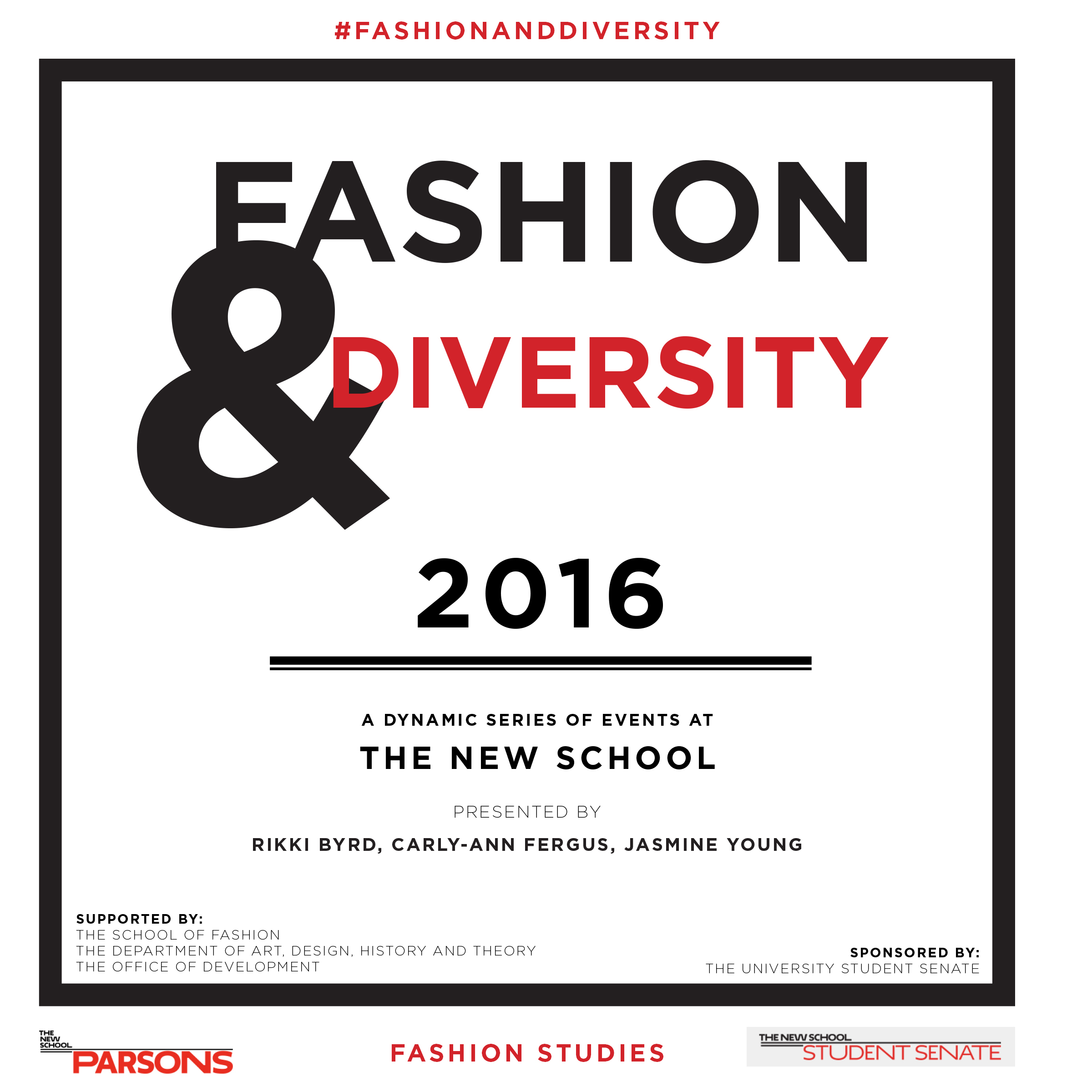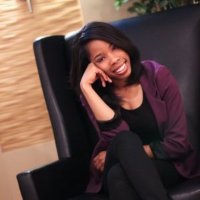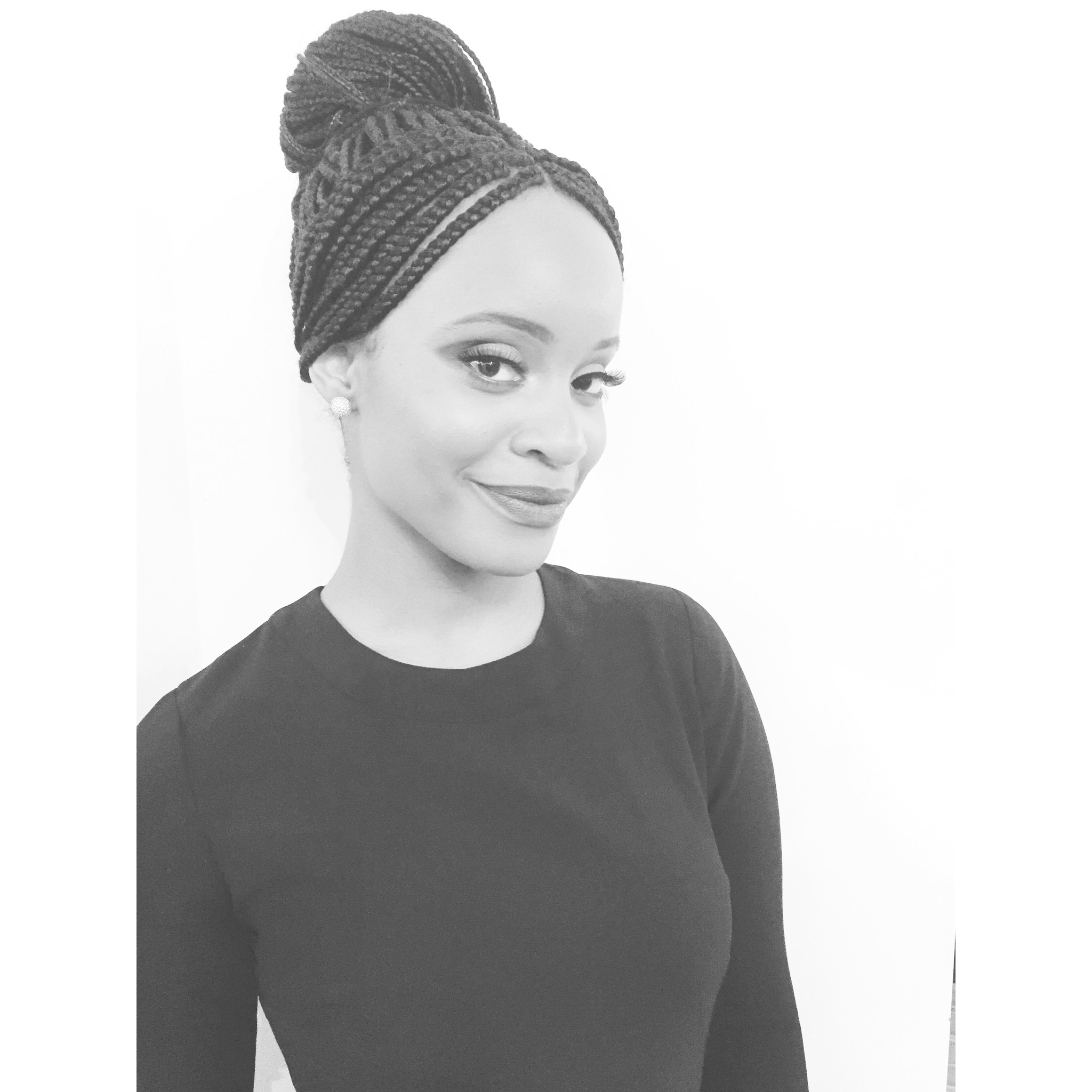
“Fashion and Race,” a panel discussion on “new narratives of blackness in fashion” will be held this Friday, February 12 at The University Center (UL105). The panel will be moderated by Senior Fashion Editor of the Huffington Post Julee Wilson and will feature industry experts, practitioners, and scholars. “Fashion and Race” is the second event in the Fashion & Diversity Series at The New School, following the “Fashion and Jazz” discussion on February 2. Organized by M.A. Fashion Studies students Rikki Byrd, Carly-Ann Fergus, and Jasmine Young, the series is part of Black History Month at Parsons and aims to “empower attendees to not only talk about diversity, but also to challenge them to think critically about and work to address issues around race and equality in the fashion industry.”
Read ADHT’s interview with Byrd, Fergus, and Young below to learn more about the Fashion & Diversity Series, how it started, and what audience members can do to turn conversation into action!
What inspired the panel’s conception?

Rikki Byrd
Rikki Byrd (RB): The Fashion and Diversity Series started off as a really small idea. Just a couple of panels here and there on how fashion intersects music. We started with Fashion and Jazz. When Sheila Johnson came to speak at the Parsons Reunion in the fall, she mentioned that diversity wasn’t just about getting students into an institution but providing support services and opportunities for success. We took that a step further and applied it to the fashion industry and, thus, the series was born. What we are really trying to tackle with this series is solutions. We know the systemic issues that affect marginalized people in the industry. We want to first and foremost acknowledge the achievements of industry professionals who are active in this ongoing conversation on diversity in fashion. Then, we hope to encourage attendees to critically engage with these issues in their classrooms, workplaces or even their social media timelines.
How did you choose the speakers on each of the panels?

Jasmine Young
Jasmine Young (JY): We came together and thought about the different perspectives that needed to be represented in order to foster constructive conversations around fashion, diversity, race and access to the industry. It also helps that we attend a top fashion school.
How and why did you decide the topics for each of the events in the series (Fashion and Jazz & Fashion and Race)? Do you see any connection or overlap between the two?
RB: Both events were a part of our “Black History Month at Parsons” programming for the series. Fashion, as a system, intersects culture in varying ways, from music, to race, to gender. We wanted to take the time to really highlight the importance of fashion, dress and style for Black Americans during this month. In addition to Black History Month, the Fashion and Race panel is taking place at the start of New York Fashion Week, which we hope will add to the growing conversation on the lack of racial diversity in the industry.
Who is your target audience with this series?
JY: Everyone. Diversity should be a topic that interests all considering we all embody diversity in very unique ways, both individually and collectively.
What main ideas or themes do you want your audience to walk away thinking about?

Carly-Ann Fergus
Carly-Ann Fergus (CAF): The main goal of of the series is to educate and empower attendees to think about solutions that successfully normalize representation, inclusion and diversity in the industry.
JY: Also, to really think about what diversity in the fashion industry means. It’s not simply about racial diversity, which is complex in and of itself, but it extends to diversity in gender, management, work experience, nationalities, etc. What role does diversity play within our fashion industry? Or how is it inactive?
The event description states that one of the main goals of the series is to “challenge [attendees] to critically engage and work toward solutions.” What does critical engagement look like to you? What can audience members do in order to continue the conversation and take concrete action?
RB: Critical engagement, first and foremost, is about not being afraid to talk about issues that affect marginalized people in such a dominating industry. For so long, the fashion industry has kind of taken this “We don’t like to talk about it,” agenda, but turning a blind eye doesn’t alleviate systemic issues. In this series, we hope, if nothing else, to empower attendees to carry these conversations into their workplaces and classrooms and enlighten others.
What do you see as a potential solution to the lack of diversity in fashion?
CAF: It’s a systemic issue that ranges from socio-economic issues, lack of access, sometimes prejudice. It’s very similar to the debate currently happening around lack of diversity in Hollywood. Starting with a constructive conversation is the first step. Our April event called the “Access Summit” will be a deep dive into the root of the problem. That event will host a series of conversations starting with diversifying education, followed by a conversation on access to funding for designers of color, ending with women of color in executive roles. It’s going to be a 360 view on the structure of the industry and ways diversity can be achieved. Diversifying an industry and or institution has a great deal to do with normalizing inclusion, negating the notions of who belongs or preconceived notions that shut others out.
Are there any plans to make this a continuing series at The New School? If so, what are some possible directions this series could take in the future?
CAF: Our hope is for this series to continue and evolve while remaining student led.
RB: Yes, we would love for this series to continue. Unfortunately, all three of us graduate this year, so we are hoping we can hand it over to like-minded students who are just as passionate about these topics as we are.
JY: Definitely. It’s too important of a conversation to be resolved in one semester.
Visit here for more information about Friday’s “Fashion and Race” event.
This interview was conducted by Ana Miljak.


























